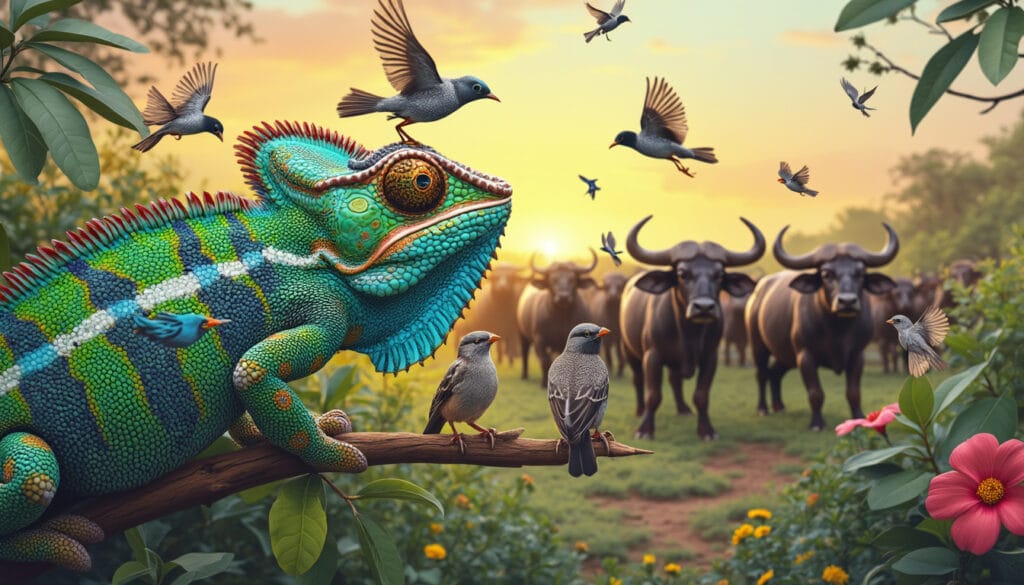Last February, a singular expedition took place in the discreet city of Río Cuarto. Accompanied by passionate colleagues and my daughter Francesca, we embarked on this journey with a specific goal. In search of a worm of unusual distinction, our adventure took an unexpected dimension.
Why a worm? Because, unlike familiar vertebrates such as mammals or birds, invertebrates, and more specifically worms, reveal a surprising diversity within the animal kingdom. The worm Salinella, discovered by Johannes Frenzel in the 19th century, represents a true time machine, offering a fascinating glimpse into the origins of animal life. Our quest across the Argentine Pampas highlighted the challenges of rediscovering an almost forgotten species, in a landscape now dominated by intensive agriculture. Despite the obstacles, the allure of rediscoving this primitive worm drives us to persevere in our search.
For decades, scientists have been intrigued by the presence of Salinella, an unusual worm whose existence raises many questions. Discovered in the 19th century, this organism continues to challenge researchers with its rarity and complex evolutionary history.
What is salinella and why is it so special
The Salinella is often described as one of the least known animals ever recorded. This worm, named by the German zoologist Johannes Frenzel, literally means “little inhabitant of salt.” What distinguishes Salinella from other worms is its purported simplicity and antiquity within the animal kingdom. According to Frenzel, Salinella would represent the unique surviving link of an ancestral lineage, thus providing valuable insight into the beginnings of animal diversity.
What is the history of the discovery of salinella
The discovery of Salinella dates back to the 1890s, when Frenzel received a sample of saline soil from his colleague Wilhelm “Guillermo” Bodenbender, coming from the salt flats in the Río Cuarto region of Argentina. By adding water and, inadvertently, iodine to this sample, Frenzel cultivated conditions that allowed the worm to appear. However, the ambiguous instructions left by Frenzel make it difficult to pinpoint the exact location of Salinella in the soil or salt, complicating any attempts at rediscovery.
What are the unique characteristics of salinella
Salinella is often considered the oldest and simplest of living animals. Its basic anatomy, devoid of complex structures, positions it as a living witness to primitive evolution. This simplicity makes it a sort of time machine, allowing scientists to study the origins of animality over a period of more than 600 million years.
Why is salinella difficult to find
The quest to rediscover Salinella is fraught with challenges. Frenzel’s initial description is one of the most vague field directives ever recorded, simply referring to the collection site as “salt flats in the Río Cuarto region.” Moreover, massive agricultural transformations in the area over the past 130 years have made locating the original habitat even more complex. The vast Pampas have been replaced by fields of soy, alfalfa, and corn, thus reducing potential ecological niches for Salinella.
What is the impact of salinella on the understanding of animal evolution
Studying Salinella would provide invaluable insights into the early stages of animal evolution. As a potential representative of an ancestral lineage, this worm could help unveil the mechanisms through which the first animals emerged and diversified. Understanding its genome and biology could shed light on the relationships between worms, insects, and even vertebrates, providing an overview of the common origins of different species.
What are the next steps for salinella research
Despite the challenges, research on Salinella continues to spark scientific interest. Efforts to locate this rare organism again involve meticulous expeditions and international collaboration. Advances in genomics and molecular biology provide new methods to identify and analyze cryptic species like Salinella. Furthermore, the growing awareness of the importance of invertebrate biodiversity could mobilize more resources for this scientific quest.
How is the scientific community engaging in the conservation of salinella
The preservation of Salinella requires a concerted approach from the scientific community and local stakeholders. Protecting potential habitats from environmental degradation and intensive agriculture is crucial. Monitoring and documentation programs are in place to track any potential discoveries of Salinella, while educational efforts aim to raise public awareness about the importance of this enigmatic organism for our understanding of life.
What are the technological challenges in studying salinella
Research on Salinella faces several technological challenges. Detecting rare and cryptic species in transformed ecosystems requires cutting-edge techniques in molecular biology and ecology. The use of environmental DNA (eDNA) sequencing could offer a promising method to identify the presence of Salinella without physically capturing it. Additionally, advanced imaging tools are needed to study the delicate morphology of this worm, enabling more detailed analysis of its internal structures.
What are the ecological implications of salinella
Salinella potentially plays an important role in the ecosystems where it resides. As an invertebrate, it may contribute to the decomposition of organic matter and soil fertility. Understanding its ecology helps not only to preserve a rare species but also to maintain the balance of local ecosystems. Furthermore, Salinella could serve as an indicator of environmental health, reflecting changes in saline habitats in Argentina.
What is the significance of salinella for modern science
The interest in Salinella goes beyond its rarity; it represents a unique window into the beginnings of animal life. By studying this worm, scientists can better understand the evolutionary processes that shaped current biological diversity. Furthermore, potential discoveries surrounding Salinella could have applications in other scientific fields, such as biotechnology and evolutionary genetics. Its simplicity could inspire new approaches in the search for primary biological models.
How does salinella inspire future research
The mysterious Salinella continues to inspire future research as a hypothetical study object with the potential to revolutionize our understanding of animal evolution. Scientists are motivated by the possibility of filling significant gaps in the tree of life by studying this unique species. Renewed interest in lesser-known invertebrates is fueling multidisciplinary research initiatives, combining zoology, genetics, and geography to pursue the quest for Salinella.
What are the obstacles to rediscovering salinella
The main obstacles to rediscovering Salinella lie in the changing conditions of its original habitat and the vague nature of Frenzel’s instructions. Extensive agricultural transformation in the Río Cuarto region has reduced natural biodiversity supports, making locating Salinella more challenging. Additionally, the absence of precise specifications on the exact environment in which Frenzel found the worm complicates current research efforts. These challenges require innovative approaches and ongoing persistence from researchers.
What are the future prospects for salinella
The future prospects for Salinella largely depend on scientific advancements and the conservation of its potential habitats. With new technologies, it may be possible to develop revolutionary methods to detect and study this rare species more effectively. Moreover, improved international cooperation could facilitate discoveries and knowledge sharing. If Salinella is rediscovered, this could not only confirm its unique place in the animal kingdom but also open new avenues of research on evolution and biodiversity.
How does salinella influence biodiversity research
Salinella influences biodiversity research by highlighting the importance of lesser-known invertebrate species in the global ecosystem. Its quest underscores the necessity of preserving even the most discreet forms of life and recognizing their role in ecological health. This renewed attention to rare invertebrates contributes to a more holistic approach to conservation and encourages scientists to explore often neglected ecological niches.
Articles similaires
Thank you!
We will contact you soon.














